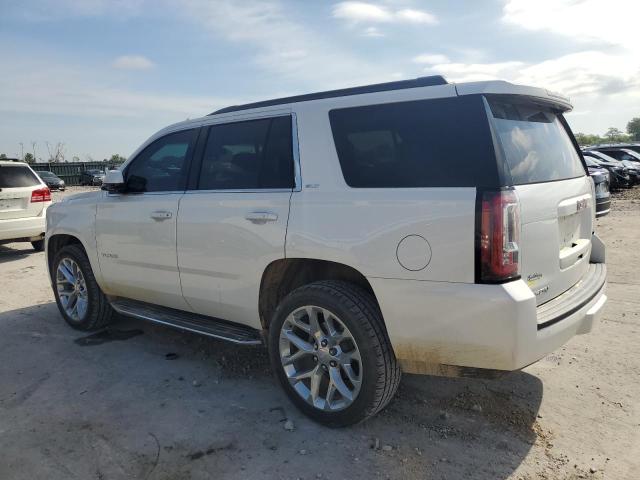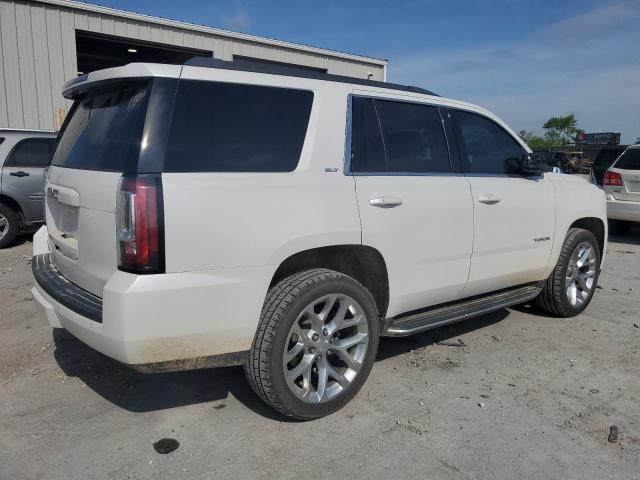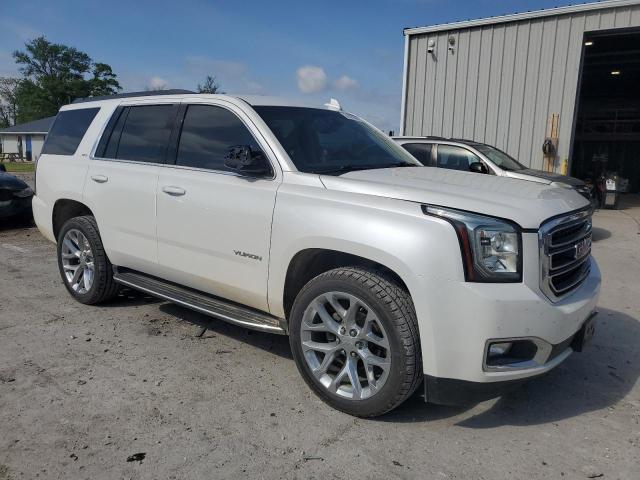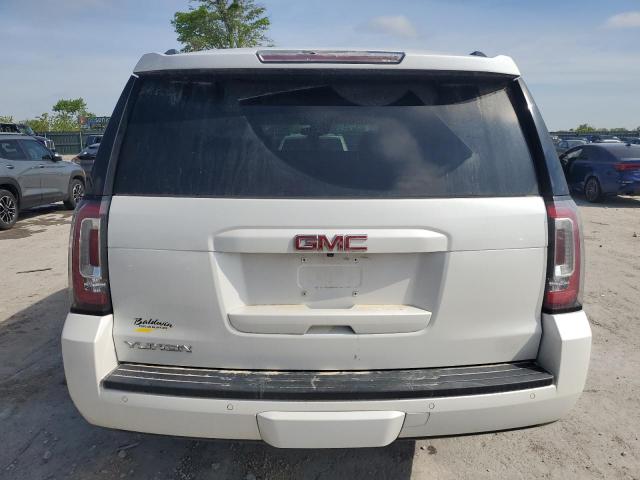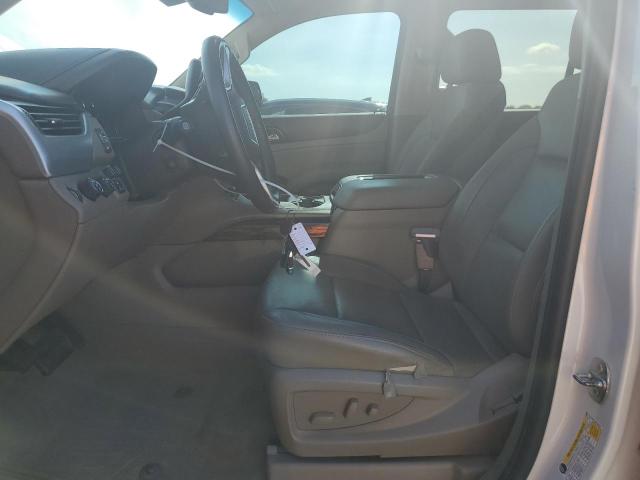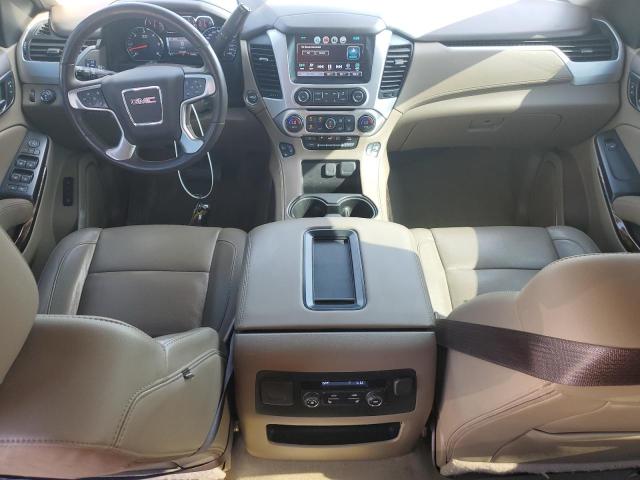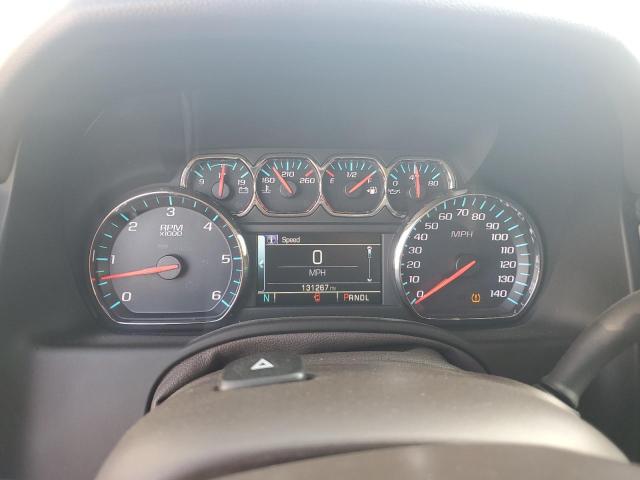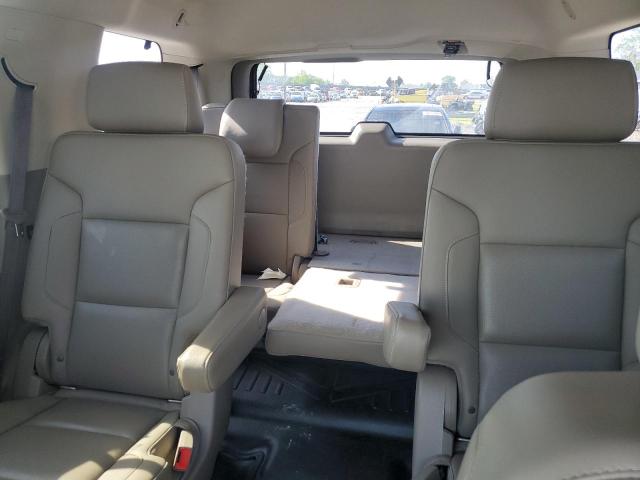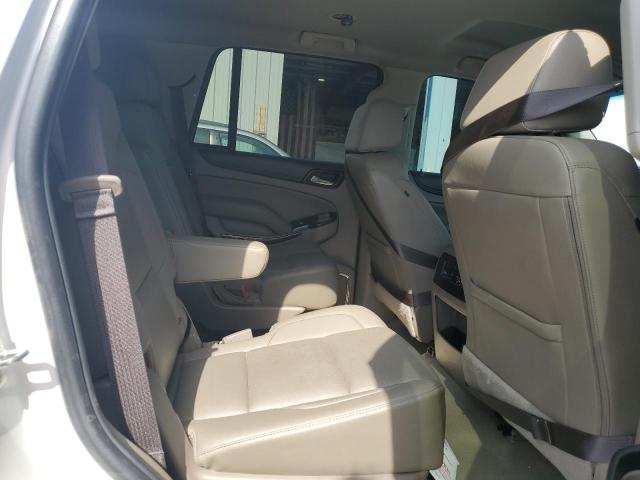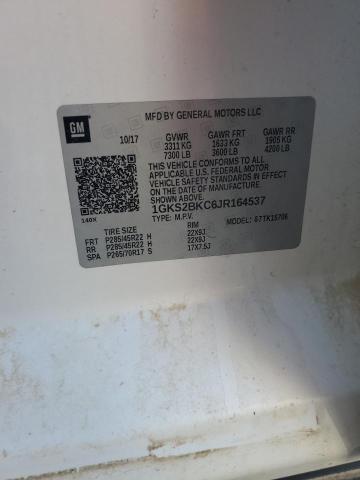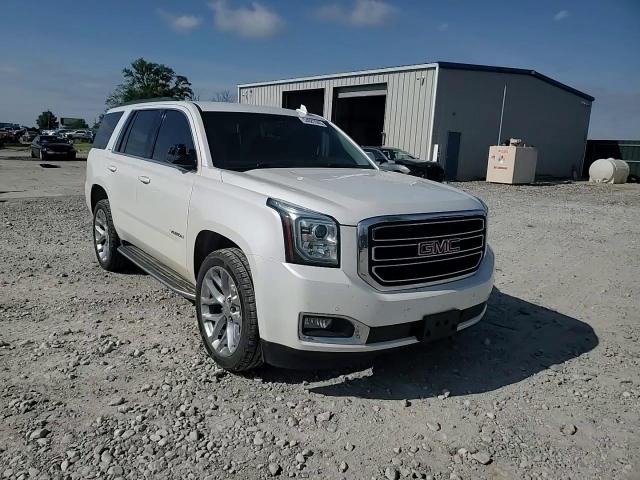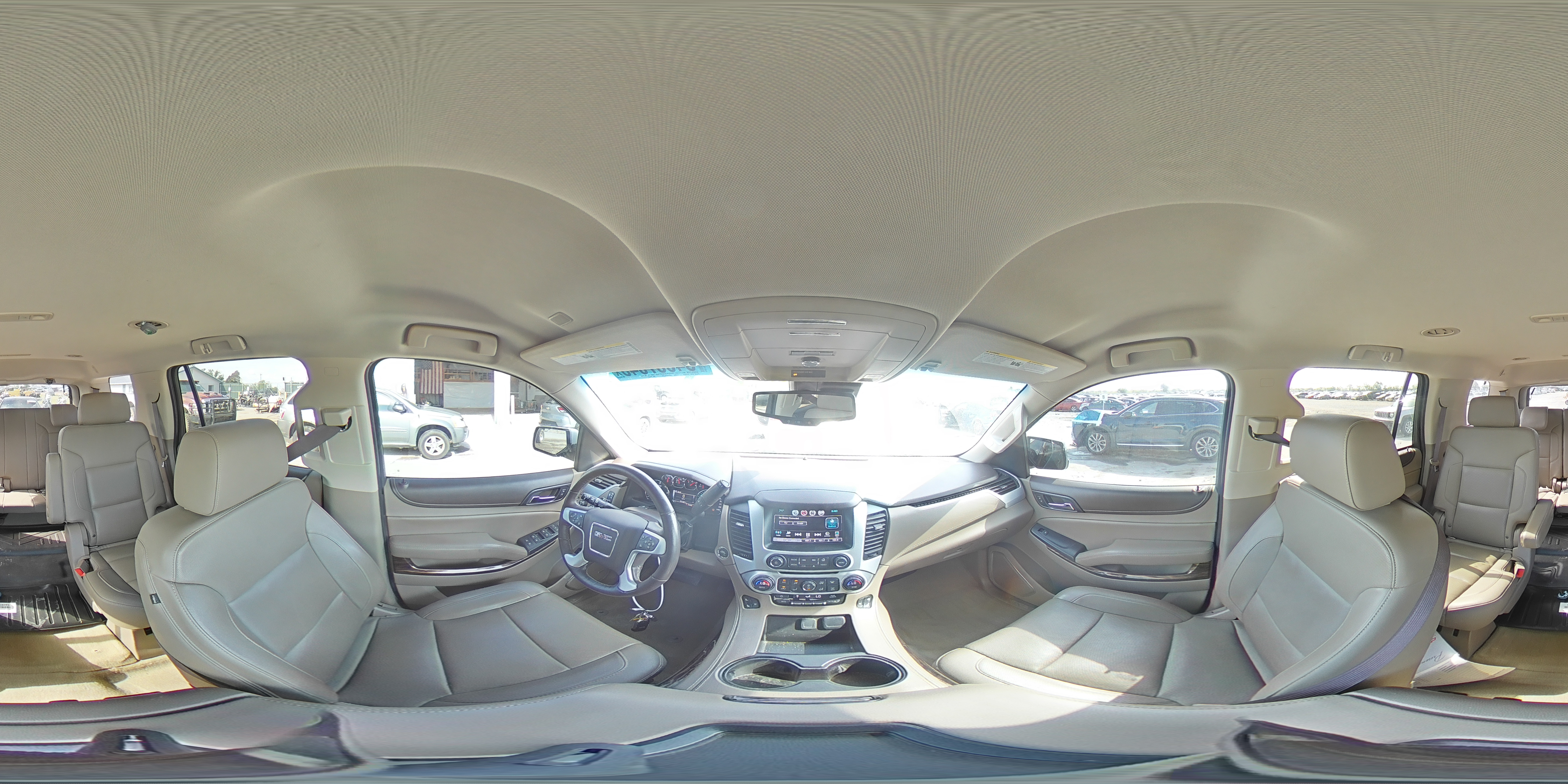2018 GMC YUKON | 1GKS2BKC6JR164537
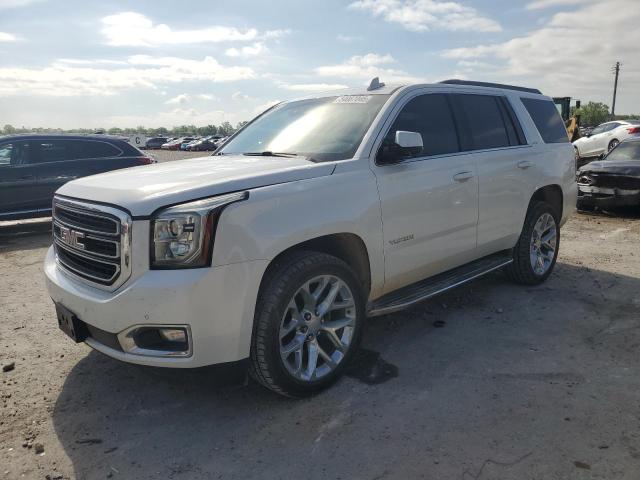 ❯
❯
Specifications
3
~$75,000
Engine: 6.2L naturally aspirated V8
Torque: 624 Nm
0–100 km/h: ~5.9 s
The GMC Yukon emerged as a capable and surprisingly quick full-size SUV, particularly in its Denali trim. The highlight was the 6.2-liter V8, shared with the Cadillac Escalade and Corvette-derived, producing 420 horsepower and 624 Nm of torque. When paired with GM’s 10-speed automatic transmission and available four-wheel drive, the Yukon Denali could sprint from 0 to 100 km/h in under 6 seconds — remarkable for a vehicle weighing nearly 2.7 tons.
Despite its body-on-frame architecture, the Yukon handled confidently thanks to GM’s Magnetic Ride Control system (standard on Denali), which adapted suspension damping in real time. Cornering behavior was composed for its size, with minimal pitch and roll for a three-row SUV. The electric power steering provided good feedback, and braking performance was strong given the mass. While off-road prowess remained secondary to road manners, the AWD system and available towing packages made the Yukon a commanding long-distance cruiser and trailer hauler.
The Yukon was a well-rounded performer: it delivered V8 thrust and highway composure while preserving full utility. Whether navigating city traffic or overtaking on the interstate with passengers and cargo, the Denali trim in particular made the Yukon feel like a luxury muscle SUV — blending comfort, space, and real-world power in a refined package.
Body Styles
The GMC Yukon was offered in two body styles: the standard Yukon and the extended-wheelbase Yukon XL. Both were traditional full-size SUVs with three-row seating and upright proportions. The Yukon featured a squared-off design with a prominent front grille, high beltline, tall hood, and boxy rear quarters — projecting strength and formality. Chrome accents, C-shaped LED daytime running lights, and slab-sided body panels emphasized visual width. The Yukon XL added over 20 inches in length, increasing third-row space and cargo capacity significantly. A wide rear track, bold wheel arches, and roof rails contributed to its imposing stance.
Model Name Meaning (Manufacturer)
“Yukon” is named after the vast and remote Yukon Territory in northwestern Canada. GMC selected the name to evoke images of rugged landscapes, capability, and endurance — aligning the SUV with outdoor strength and long-range utility. It communicates a blend of boldness and refinement in both name and product positioning.
Model Name Meaning (Languages)
The word “Yukon” is of Indigenous origin, believed to derive from Gwich’in or other Athabaskan languages, meaning “great river” or “clear water.” In English usage, it has become synonymous with wilderness, exploration, and vastness. The name suits a large SUV designed to handle cross-country travel with authority, while also resonating with North American buyers seeking dependability and capability.
Body & Interior Colors and Rims
The Yukon’s exterior color palette reflected both luxury and utility. Core colors included Summit White, Onyx Black, Quicksilver Metallic, and Satin Steel. Premium and Denali-exclusive shades like White Frost Tricoat, Crimson Red Tintcoat, and Dark Sky Metallic added depth and sophistication. Chrome or gloss black trim varied by package, with the Denali featuring a signature grille, body-colored bumpers, and polished accents that distinguished it from lesser trims.
Inside, the Yukon offered high-quality materials across a range of themes. Standard SLT models featured Jet Black or Cocoa/Dune leather with aluminum accents, while the Denali introduced premium perforated leather in Shale, Cocoa/Mahogany, or Jet Black, paired with real wood appliqués and ambient lighting. Seat options included heated and ventilated front buckets, heated second-row captain’s chairs, and power-folding third-row seats. Soft-touch panels and stitched dashboards elevated the premium feel, while triple-sealed doors and laminated glass enhanced cabin quietness.
Wheels ranged from standard 18-inch alloy designs to 20-inch chrome or polished aluminum options on SLT trims. The Denali offered 20-inch multi-spoke aluminum wheels as standard and optional 22-inch machined or painted wheels with premium inserts. These large-diameter wheels filled the arches assertively, emphasizing the Yukon’s upscale proportions. Finishes included ultra-bright machined faces, dark anodized metallics, and gloss black depending on trim and package.
Top Expensive Options
- 6.2L V8 Denali Performance Package: $3,500
- Magnetic Ride Control Adaptive Suspension: $1,695
- Open Road Package (Sunroof + Navigation): $2,760
- Rear-Seat Entertainment with Dual Screens: $1,995
- Power Retractable Assist Steps: $1,745
- Enhanced Security Package with Interior Motion Sensors: $395
- 22-inch Premium Painted Wheels with Chrome Inserts: $2,995
- Adaptive Cruise Control with Forward Automatic Braking: $895
- Advanced Trailering Package with Hitch Guidance: $575
- Dual Rear Captain’s Chairs with Power Fold: $1,295
vs Competitors
The Yukon’s key competitors included the Chevrolet Tahoe/Suburban, Ford Expedition, Toyota Sequoia, and Nissan Armada. While mechanically similar to the Tahoe and Suburban, the Yukon positioned itself as the more premium, quieter, and better-appointed option — especially in Denali form. Compared to the Expedition, the Yukon offered a more robust V8 (especially vs. Ford’s EcoBoost V6) and a more traditional, luxurious interior layout. Against the Sequoia and Armada, the Yukon had a more modern cabin, better infotainment, and superior ride quality. The Denali trim challenged base luxury SUVs like the Infiniti QX80 and Lincoln Navigator in comfort and features, while undercutting them in price. In all configurations, the Yukon balanced prestige and utility with more elegance and polish than most mainstream full-size SUVs.
Fun Fact
The 6.2L V8 engine used in the Yukon Denali was derived from the same small-block family as the Chevrolet Corvette’s LT series, giving the SUV real performance pedigree. Thanks to cylinder deactivation and direct injection, it delivered both impressive acceleration and surprising highway efficiency — making the Denali one of the few three-row SUVs capable of comfortably towing 8,400 lbs and cruising quietly at 120 km/h in 4-cylinder mode.
Lot Details
Final Bid GMC Yukon (2018)
$10,100
$15,334
$37,750
Specifications
3
~$75,000
Torque:
0–100 km/h:
The GMC Yukon emerged as a capable and surprisingly quick full-size SUV, particularly in its Denali trim. The highlight was the 6.2-liter V8, shared with the Cadillac Escalade and Corvette-derived, producing 420 horsepower and 624 Nm of torque. When paired with GM’s 10-speed automatic transmission and available four-wheel drive, the Yukon Denali could sprint from 0 to 100 km/h in under 6 seconds — remarkable for a vehicle weighing nearly 2.7 tons.
Despite its body-on-frame architecture, the Yukon handled confidently thanks to GM’s Magnetic Ride Control system (standard on Denali), which adapted suspension damping in real time. Cornering behavior was composed for its size, with minimal pitch and roll for a three-row SUV. The electric power steering provided good feedback, and braking performance was strong given the mass. While off-road prowess remained secondary to road manners, the AWD system and available towing packages made the Yukon a commanding long-distance cruiser and trailer hauler.
The Yukon was a well-rounded performer: it delivered V8 thrust and highway composure while preserving full utility. Whether navigating city traffic or overtaking on the interstate with passengers and cargo, the Denali trim in particular made the Yukon feel like a luxury muscle SUV — blending comfort, space, and real-world power in a refined package.
Body Styles
The GMC Yukon was offered in two body styles: the standard Yukon and the extended-wheelbase Yukon XL. Both were traditional full-size SUVs with three-row seating and upright proportions. The Yukon featured a squared-off design with a prominent front grille, high beltline, tall hood, and boxy rear quarters — projecting strength and formality. Chrome accents, C-shaped LED daytime running lights, and slab-sided body panels emphasized visual width. The Yukon XL added over 20 inches in length, increasing third-row space and cargo capacity significantly. A wide rear track, bold wheel arches, and roof rails contributed to its imposing stance.
Model Name Meaning (Manufacturer)
“Yukon” is named after the vast and remote Yukon Territory in northwestern Canada. GMC selected the name to evoke images of rugged landscapes, capability, and endurance — aligning the SUV with outdoor strength and long-range utility. It communicates a blend of boldness and refinement in both name and product positioning.
Model Name Meaning (Languages)
The word “Yukon” is of Indigenous origin, believed to derive from Gwich’in or other Athabaskan languages, meaning “great river” or “clear water.” In English usage, it has become synonymous with wilderness, exploration, and vastness. The name suits a large SUV designed to handle cross-country travel with authority, while also resonating with North American buyers seeking dependability and capability.
Body & Interior Colors and Rims
The Yukon’s exterior color palette reflected both luxury and utility. Core colors included Summit White, Onyx Black, Quicksilver Metallic, and Satin Steel. Premium and Denali-exclusive shades like White Frost Tricoat, Crimson Red Tintcoat, and Dark Sky Metallic added depth and sophistication. Chrome or gloss black trim varied by package, with the Denali featuring a signature grille, body-colored bumpers, and polished accents that distinguished it from lesser trims.
Inside, the Yukon offered high-quality materials across a range of themes. Standard SLT models featured Jet Black or Cocoa/Dune leather with aluminum accents, while the Denali introduced premium perforated leather in Shale, Cocoa/Mahogany, or Jet Black, paired with real wood appliqués and ambient lighting. Seat options included heated and ventilated front buckets, heated second-row captain’s chairs, and power-folding third-row seats. Soft-touch panels and stitched dashboards elevated the premium feel, while triple-sealed doors and laminated glass enhanced cabin quietness.
Wheels ranged from standard 18-inch alloy designs to 20-inch chrome or polished aluminum options on SLT trims. The Denali offered 20-inch multi-spoke aluminum wheels as standard and optional 22-inch machined or painted wheels with premium inserts. These large-diameter wheels filled the arches assertively, emphasizing the Yukon’s upscale proportions. Finishes included ultra-bright machined faces, dark anodized metallics, and gloss black depending on trim and package.
Top Expensive Options
- 6.2L V8 Denali Performance Package: $3,500
- Magnetic Ride Control Adaptive Suspension: $1,695
- Open Road Package (Sunroof + Navigation): $2,760
- Rear-Seat Entertainment with Dual Screens: $1,995
- Power Retractable Assist Steps: $1,745
- Enhanced Security Package with Interior Motion Sensors: $395
- 22-inch Premium Painted Wheels with Chrome Inserts: $2,995
- Adaptive Cruise Control with Forward Automatic Braking: $895
- Advanced Trailering Package with Hitch Guidance: $575
- Dual Rear Captain’s Chairs with Power Fold: $1,295
vs Competitors
The Yukon’s key competitors included the Chevrolet Tahoe/Suburban, Ford Expedition, Toyota Sequoia, and Nissan Armada. While mechanically similar to the Tahoe and Suburban, the Yukon positioned itself as the more premium, quieter, and better-appointed option — especially in Denali form. Compared to the Expedition, the Yukon offered a more robust V8 (especially vs. Ford’s EcoBoost V6) and a more traditional, luxurious interior layout. Against the Sequoia and Armada, the Yukon had a more modern cabin, better infotainment, and superior ride quality. The Denali trim challenged base luxury SUVs like the Infiniti QX80 and Lincoln Navigator in comfort and features, while undercutting them in price. In all configurations, the Yukon balanced prestige and utility with more elegance and polish than most mainstream full-size SUVs.
Fun Fact
The 6.2L V8 engine used in the Yukon Denali was derived from the same small-block family as the Chevrolet Corvette’s LT series, giving the SUV real performance pedigree. Thanks to cylinder deactivation and direct injection, it delivered both impressive acceleration and surprising highway efficiency — making the Denali one of the few three-row SUVs capable of comfortably towing 8,400 lbs and cruising quietly at 120 km/h in 4-cylinder mode.

